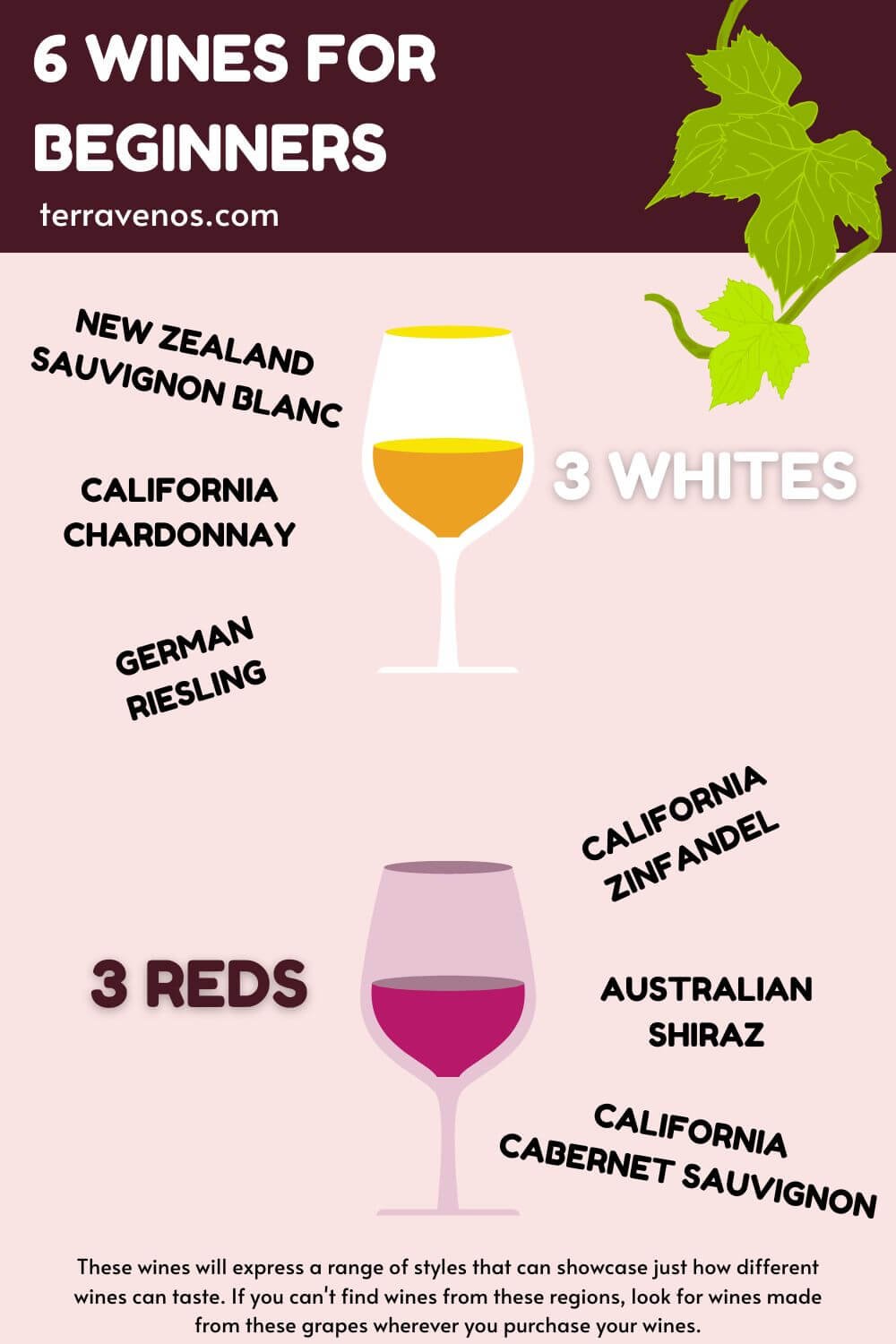
The best wines for new drinkers are: New Zealand Sauvignon Blanc, California Chardonnay, German Riesling, California Zinfandel (Italian Primitivo), Australian Shiraz, and Napa Valley Cabernet Sauvignon. These classic, diverse wines give a good introduction to wine for beginners.
Here’s what I wish someone had told me about wine when I was just starting out.
Wine Recommendations for Beginners: 6 Classic Bottles
When you’re just getting started as a beginner wine drinker, it’s best to keep things simple.
Helpful Tip: It doesn’t matter which bottles you choose, just stick with the wines made from these 6 grapes.
I’ve been there. New to wine, staring down the adult beverage aisle – or maybe it’s staring me down – trying to figure out how to interpret a mosaic of labels. Overwhelmed. I just walked away empty handed.
Don’t be me.
So let’s jump into these 6 great wine recommendations.
With so many wines in the world, it’s hard to know where to start. But the more familiar you are with the different wine styles, the more you’ll start to identify your likes and dislikes. You don’t have to do this all at once, but it can be helpful to try different styles side-by-side.
How Much Should a Beginner Spend on a Bottle of Wine?
In a perfect world, I would recommend investing around $10-$15 USD in a bottle of wine as a new drinker. This means you’ll spend around $70-$80 if you purchase all of the wines below at once.
Invite your friends/family over and taste them together in one sitting.
Tasting all of the wines side-by-side will help you make mental notes on what you enjoy about each wine style, or, conversely, what you dislike.
Helpful Tip: Check out this post on how to host a wine tasting for beginners.
If you decide to taste all of these wines at once, taste them in the order listed below.
German Riesling
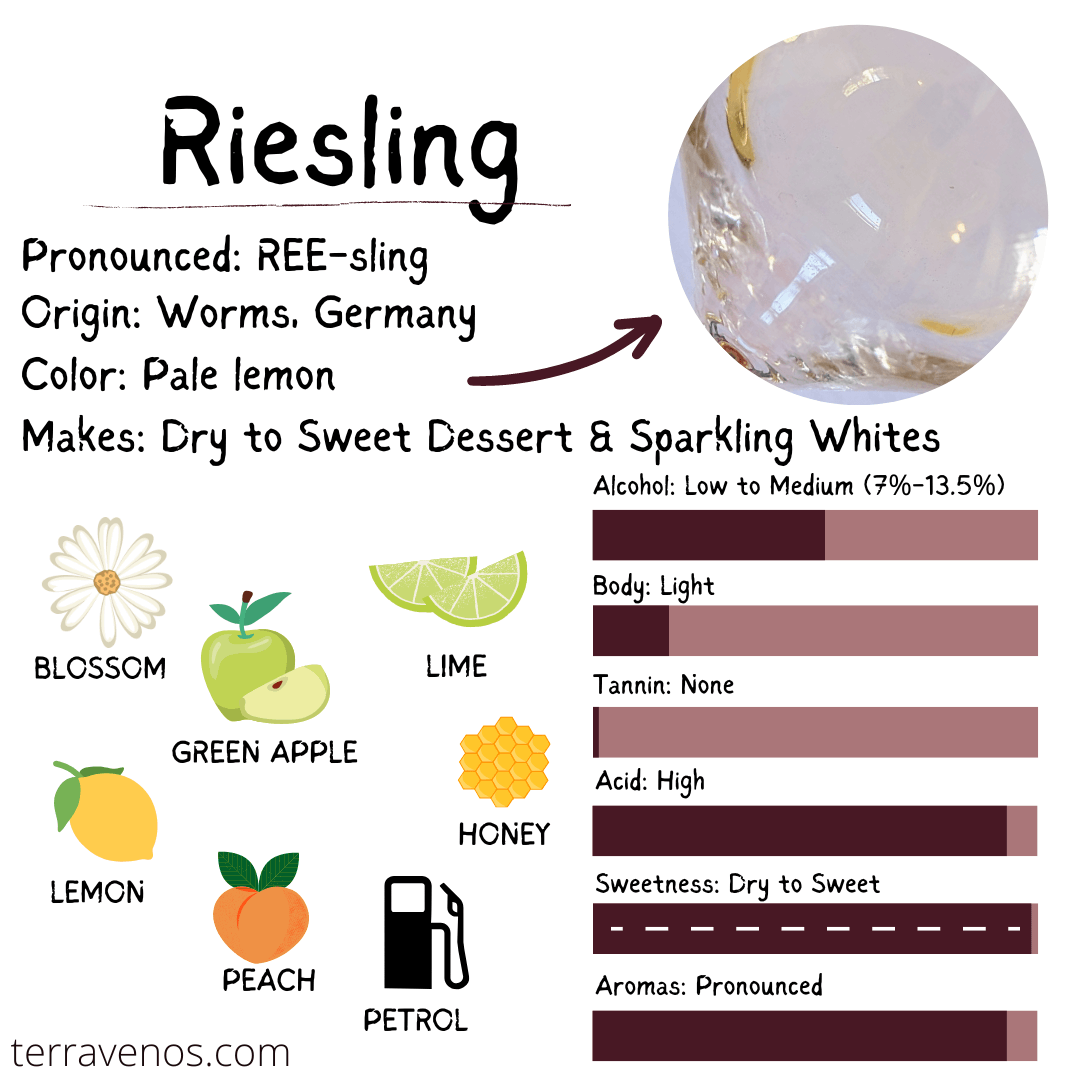
Riesling will be lighter wine with lots going on with the nose: citrus, stone fruits (peach, apricot), and white flowers.
Look for Kabinet, Spatlese, or Auslese on the label. These are classic styles of Riesling wine.
Or, if you can’t find a German Riesling, look for an off-dry Washington Riesling. They will also have a bit of sweetness to them, a characteristic that many who are newer to wine may find pleasantly surprising.
Rieslings are typically lower alcohol, high acid wines fantastic for your spicy dishes – Cajun, Asian, Indian, hot wings, and your neighborhood chili cook-off.
Helpful Tip: Riesling is a fabulous wine for new drinkers to explore. Check out this post on Riesling wine to discover more.
New Zealand Sauvignon Blanc (White Wine)
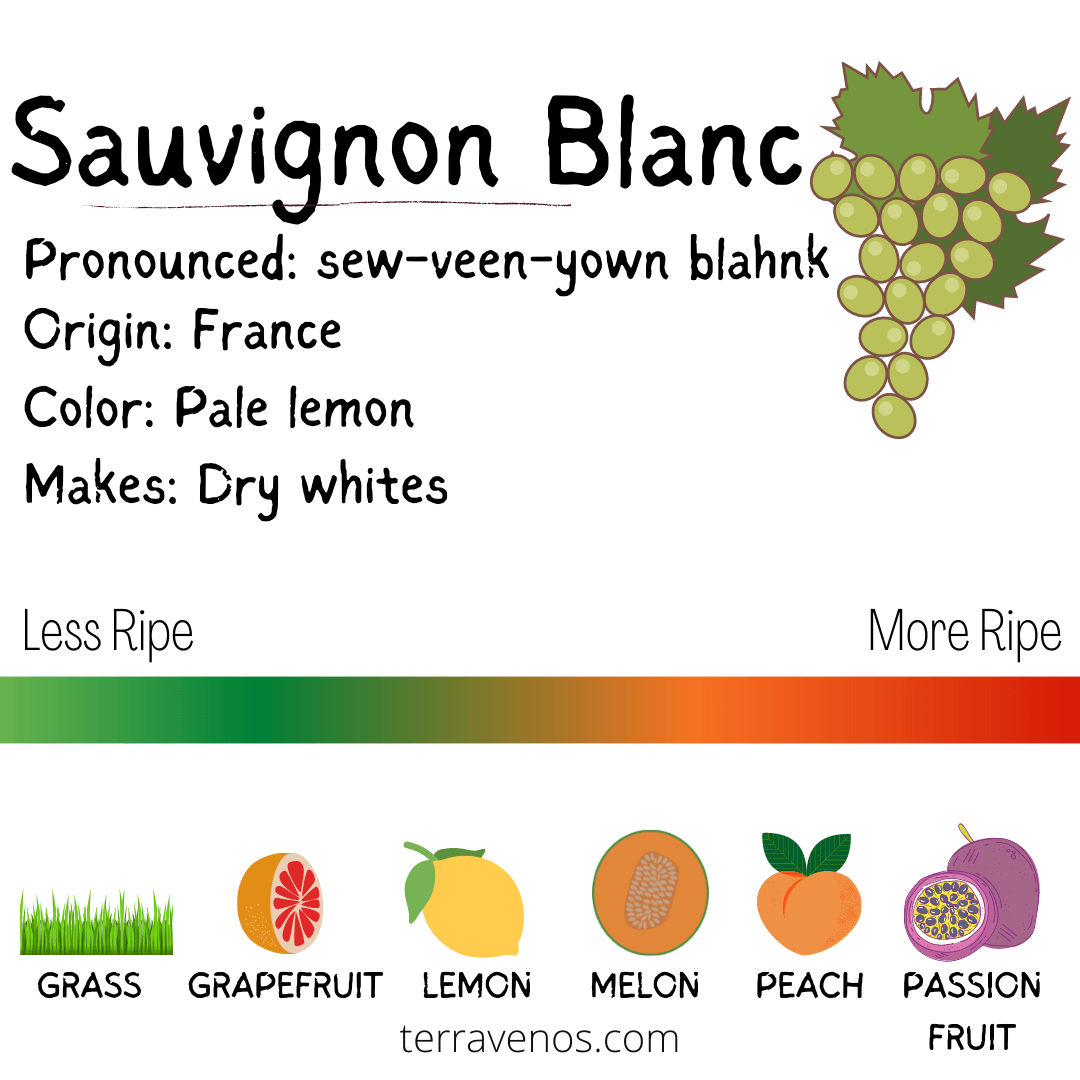
The undisputed powerhouse for Sauvignon Blanc, New Zealand exports fantastic wines at the $8+ price point.
Sauvignon Blanc is typically dry with tons of green fruit (green apples), or tropical fruit (think passion fruit and guava) depending on whether the grapes come from cool or warm growing regions.
These wines often have just the tiniest hint of spritz to give the impression of freshness. Sauvignon Blancs are great wines for afternoon sipping or paired with hearty salads.
Fun Post: Here’s an overview of why New Zealand Sauvignon Blanc is so gosh darn delicious. (It’s a little technical, but may be just right for you.)
California Chardonnay (White Wine)
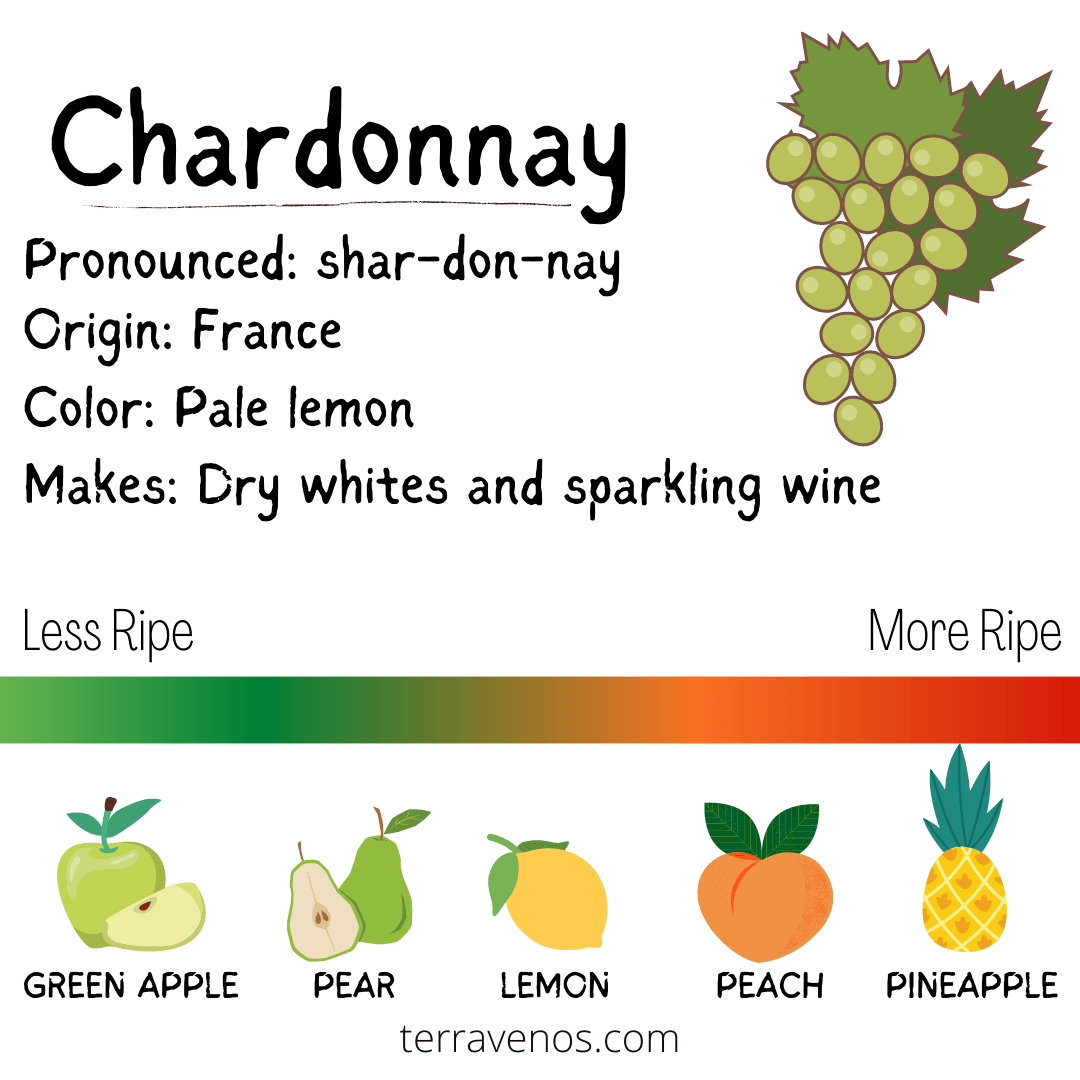
Another unique white wine style. Chardonnay wines express more of the winemaker’s skill than the grape itself because Chardonnay grapes don’t have the same natural aromatics as Sauvignon Blanc.
Helpful Tip: Check out this post that covers the differences between Chardonnay and Sauvignon Blanc.
Look for a bottle that uses descriptors like: creamy, creme brulee, toast, almonds, butter, or biscuit.
The wine will feel heavier in your mouth. A great wine for your risottos, roasted chicken, and salmon dishes.
Fun Post: Check out these 5 fun Chardonnay facts (perfect for any palate).
California Zinfandel (Zins) (Red Wine)
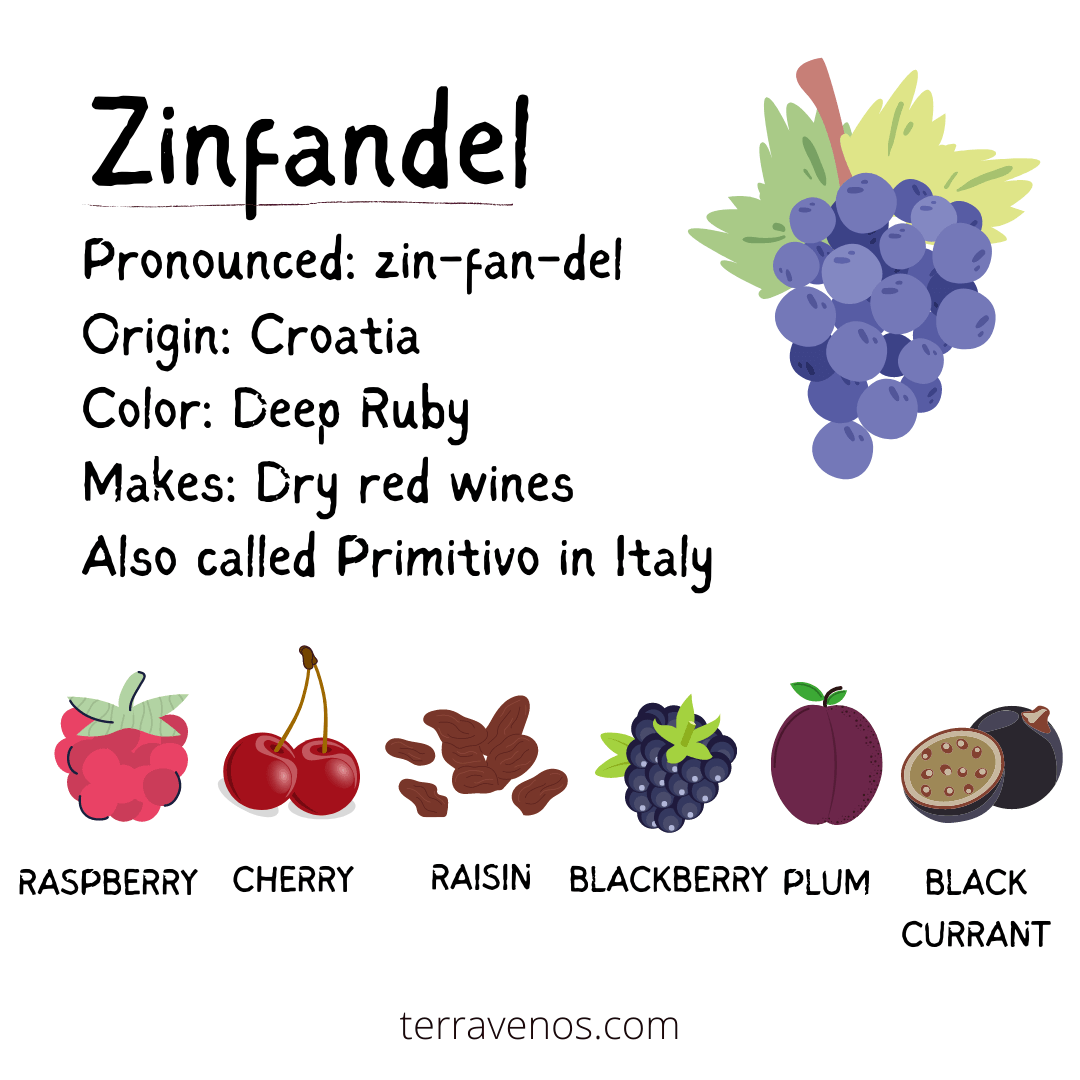
Zinfandel’s an interesting grape that’s challenging for growers. It doesn’t ripen evenly, so harvest bunches have raisins in them along with green berries that aren’t fully ripe.
This means that Zins can express this incredible profile of jammy black and red fruit (blackberry, strawberry) along with fresh fruit (sour cherry).
Stick with a Zinfandel Paso Robles or Lodi.
These are oaked wines, so expect depth and spice. Zinfandel has to come from a warmer climate to fully ripen, so expect higher alcohol levels. Pair with your weekend BBQs.
Helpful Tip: Go explore this quick guide on Zinfandel wine.
Australian Shiraz (Red Wine).
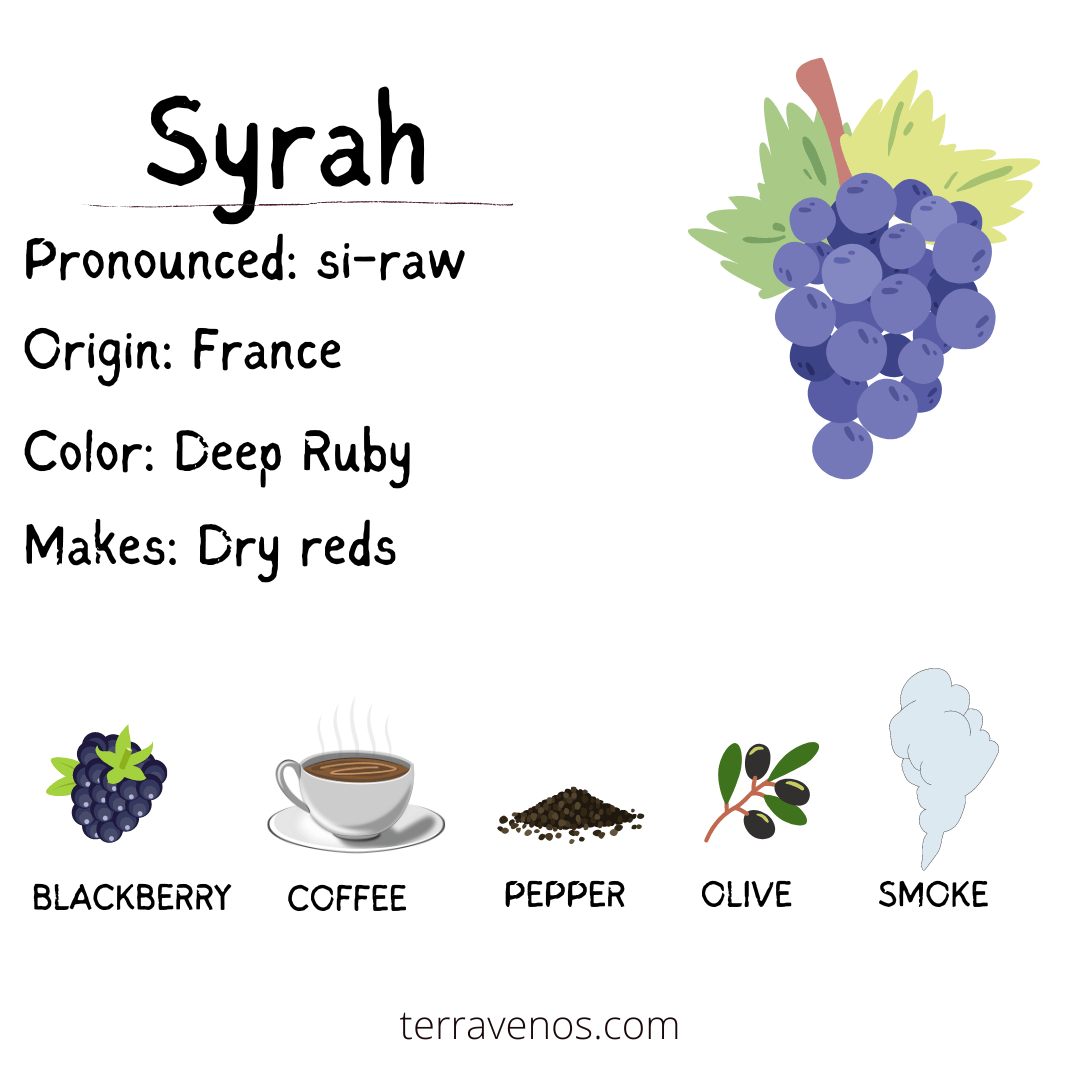
Australia’s signature grape, Shiraz, offers a different style from Zin.
- Fun Wine Fact: Outside of Australia, Shiraz goes by the name “Syrah”. Same wine, just naming conventions.
Shiraz will have more tannin, which means that it will be more drying on your tongue, along with ripe black fruit, tobacco, and peppercorn. Another great wine with roasted meat dishes.
Helpful Tip: Check out this 30-second tasting tip on how to taste tannins in red wine. Totally worth it as you dive into your next glass of red.
Napa/Sonoma Cabernet Sauvignon (Red Wine)
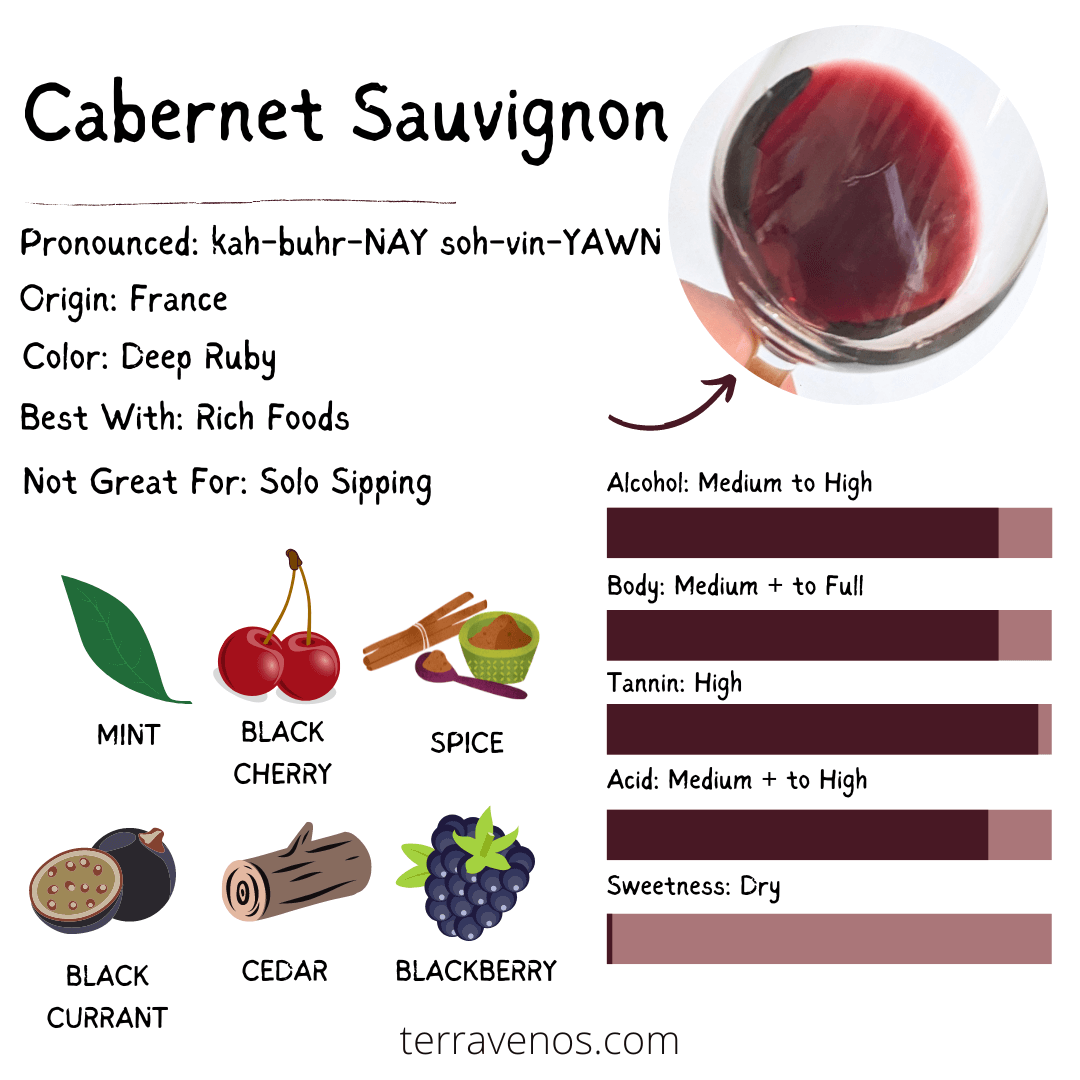
Cabernet Sauvignon is California’s #1 wine, and there’s a lot of it. For this experiment, stick with something that has Napa or Sonoma on the label.
Of the 6 wines, this one should be the most tannic (again, drying in your mouth), with fresh black fruits, baking spice, and toasty notes. You may even get some green notes – green grass, green pepper, mint, or eucalyptus.
A very different profile from the Zinfandel and Shiraz.
Best Place to Buy Wine for Beginners: Your Local Store
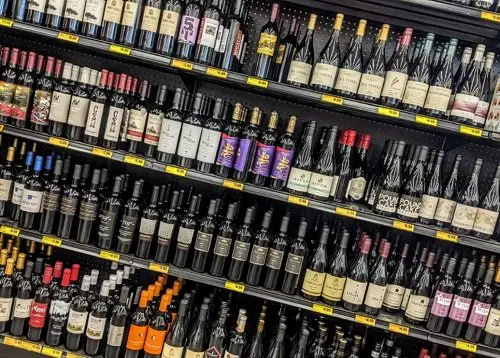
The best place to buy wines for beginners is at your local grocery store or general liquor store. These are wines you will be able to find anywhere you happen to live.
Why?
These wines are:
1) widely distributed,
2) express the typical characteristics of the wine grape that they’re made of,
3) they will be technically well made, and
4) they are affordable.
Guideline No. 1: Go to your mainstream beverage store.
In California, we’re a bit fanatical about wine. Just a little. Don’t judge. Our local Walgreens has 3 full aisles dedicated to wines – the grocery store has 4. Lucky us!
But if you’re not in wine country, stick with wherever your mainstream wines are found.
But: Why Buy Wines at a Normal Store and Not a Wine Specialty Shop?
Glad you asked. There are a couple of reasons.
These wines come from the Big Dawgs on the block: global producers and distributors.
While I’m all about supporting your local tasting rooms, the global brands focus on typicity – wines that express the typical characteristics for that style of wine – and they will be made with technical precision. These wines are also crafted to be general crowd-pleasers.
So if you have a Cabernet Sauvignon from a major producer and you enjoy it, chances are you’ll enjoy other styles of Cabernet Sauvignon.
The other reason has to do with your wallet.
Global brands produce wines at scale, meaning you’ll be able to get a good wine at a decent price point and know it will be perfectly drinkable.
A reassuring detail when you’re experimenting.
Helpful Tip: Go check out this post on how to find affordable wines for beginners with tips to save you money (I put this together just for you if you’re getting started.)
Wine Exploration for Beginners: Getting Started

Here’s a quick guide to get started with your wine tasting:
- Chill your whites and pull them out of the fridge and take them out about 15-20 minutes before you taste them.
- Don’t chill your reds.
- Line them up in the order they’re listed above, lighter to stronger.
- Have some saltines or black olives available to munch on between sips. This will help reset your taste buds and cleanse your palate. Often, our taste buds get tired after drinking lots of wine, especially red wine, which has tannins that coat our tongue.
Why Is It So Hard To Buy Wine As A New Drinker?
Starting out with wine can be overwhelming. The bar to entry seems unnecessarily complicated with unhelpful labels sporting fanciful calligraphy or colorful critters instead of any hint about the wine’s style inside.
You’re essentially dropping $8-$15 on a wing and a prayer.
Helpful Tip: Go check out this post that will help you figure out how to read a wine label.
Many wine regions don’t put the name of the grape on bottle labels, which can make buying wine as a new drinker difficult.
Another challenge that makes it hard to buy wine is that there are hundreds of different grapes all making different wine styles.
Probably the worst part about buying wine is that you can’t taste the wine beforehand to see if you’ll even like it.
Final Thoughts – Tips for Beginner Wine Drinkers
Let’s distill the challenge: Your ultimate goal is to find wines that you enjoy.
You know that not everyone will like everything, but with the ocean of wines out there, chances are good something will spark your interest.
If you’re seriously new to wine exploration, stick with these wine recommendations to learn how different wines can be:
- Sauvignon Blanc
- Riesling
- Chardonnay
- Shiraz
- Zinfandel
- Cabernet Sauvignon
Bonus Wines for Beginners…
If you’re interested in expanding the list, have thirsty friends, or can’t find one of the above, try adding an Italian Pinot Grigio and a Pinot Noir.
- Italian Pinot Grigios are light, refreshing whites with good acidity and green fruit characteristics. This is an uncomplicated wine. Taste it first in the lineup.
- Pinot Noirs can be seductive – a blend of red fruits and earth. The grape is thin-skinned, so the wine will be lighter in color than the other reds listed, but don’t mistake that for a simpler style of wine. Pinot Noir will have less tannin than the other reds listed, which many beginner wine drinkers like better.
To wine exploration!
Thirsty for More?
Check out this helpful post that goes over food and wine pairing basics, a must-read if you’re just getting started.
Before you head to the store, here’s what you need to know to Pick a Good Grocery Store Wine.
Here’s a quick post that goes over the world’s major winegrowing regions and their signature grapes.
And because you’re just starting out and have no real idea about what you like and dislike, I wrote this post to help you save money on wine.
Finally, here’s a fun post that looks at the 7 best ways beginners can master wine (according to the crowd-sourcing wine experts of Reddit).




